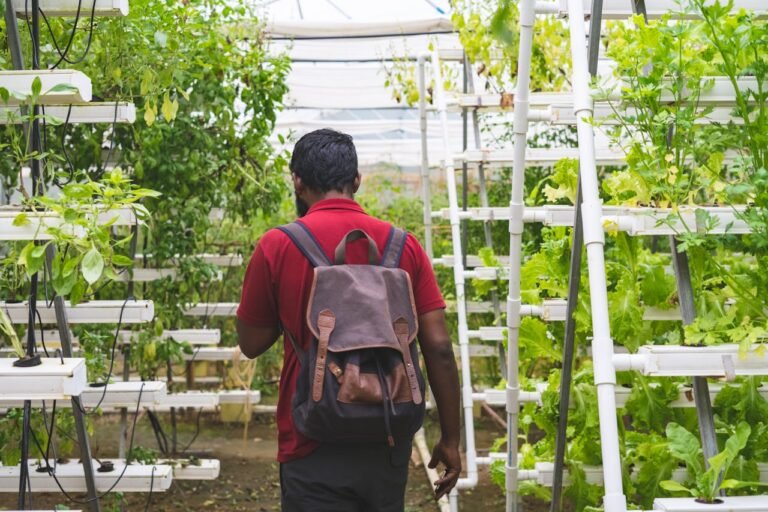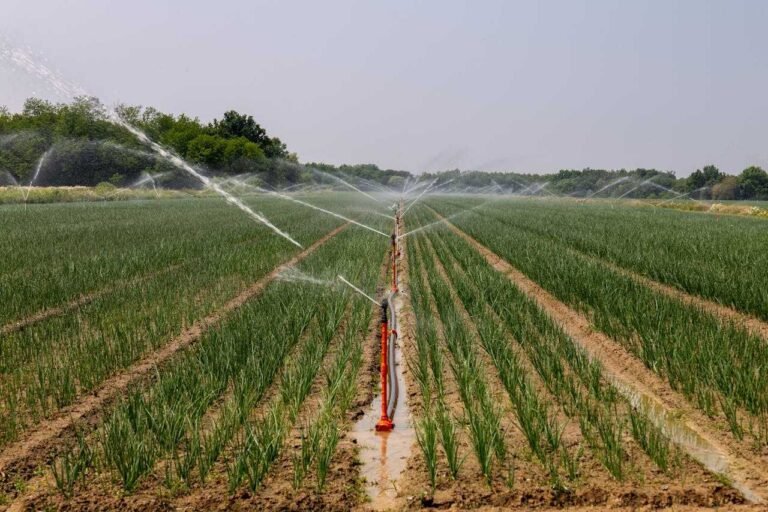Pros and Cons of Intercropping in Agriculture
Intercropping offers several benefits, including improved soil health, better resource utilisation, and pest control. However, it also comes with its set of challenges—complex management, mechanisation difficulties, potential crop competition, harvesting issues, increased labour requirements, pest and disease management complexities, and market constraints.
For farmers considering intercropping, it’s essential to weigh these disadvantages against the benefits. Careful planning, proper crop selection, and understanding the specific needs of each crop can help mitigate some of these challenges. Additionally, seeking advice from agricultural extension services and learning from other farmers’ experiences can provide valuable insights into successful intercropping practices.
Ultimately, while intercropping is not a one-size-fits-all solution, with the right approach and management, it can be a valuable component of sustainable agriculture.

In This Article
- What Is Intercropping?
- Advantages of Intercropping
- Disadvantages of Intercropping
- Real-World Applications and Case Studies
- Comparative Analysis: Intercropping vs. Monoculture
- Conclusion: Actionable Advice for Farmers
What Is Intercropping?
Intercropping is a farming method in which two or more crops are grown together in the same field simultaneously. This approach isn’t just about saving space—it’s about creating a system where plants support each other, leading to healthier crops and better yields.
There are several types of intercropping:
- Mixed Intercropping: Planting two or more crops together without distinct rows. This method is common in regions where land is limited, and farmers aim to maximise yield.
- Row Intercropping: Growing different crops in alternating rows. This arrangement allows for easier cultivation and harvesting while promoting beneficial interactions between crops.
- Relay Intercropping: Introducing a second crop into the field before the first one is harvested. This technique ensures continuous ground cover, reducing soil erosion and making efficient use of the growing season.
- Strip Intercropping: Cultivating crops in strips wide enough to allow independent cultivation but close enough for interaction. This method can enhance light interception and reduce pest infestations.
This practice has deep historical roots. In medieval England, farmers combined oats and barley—known as “dredge”—for livestock feed. French peasants mixed wheat and rye to bake “pain de méteil,” a hearty bread.
One of the most renowned intercropping systems is the “Three Sisters” method used by Indigenous peoples in North America. They planted maize, beans, and squash together: the maize provided a structure for the beans to climb, the beans enriched the soil with nitrogen, and the squash spread across the ground, suppressing weeds and retaining moisture.
While intercropping was once dismissed by colonial agriculturalists as disorganised, modern science recognises its benefits. Studies highlight its role in enhancing biodiversity, improving soil health, and increasing resilience against pests and diseases.
In today’s context of climate change and sustainable agriculture, revisiting intercropping offers valuable insights. It’s a testament to the wisdom of traditional farming practices and their relevance in modern times.
Advantages of Intercropping
1. Enhanced Resource Utilisation
One of the standout benefits of intercropping is its ability to optimise the use of sunlight, water, and soil nutrients. By pairing crops with different growth habits and root structures, farmers can ensure that resources are used more efficiently. For example, combining deep-rooted crops like maize with shallow-rooted ones like beans allows each plant to access different soil layers, reducing competition and making the most of available nutrients.
A study by Wageningen University & Research (WUR) found that intercropping can lead to a 16–29% increase in yield per unit area compared to monocultures, while also reducing fertiliser use by 19–36%. This means that farmers can harvest more from the same piece of land while using fewer chemical inputs, leading to both economic and environmental benefits.
2. Improved Soil Fertility
Intercropping maize with legumes like cowpea, soybean, and groundnut has demonstrated significant benefits for soil fertility and crop productivity. A study in northern Ghana assessed these intercropping systems across fields with varying soil fertility levels. The findings revealed that intercropping led to higher land equivalent ratios (LERs) ranging from 1.16 to 1.81, indicating more efficient use of environmental resources compared to sole cropping. Notably, these benefits were more pronounced in less fertile fields, suggesting that intercropping is particularly advantageous in nutrient-poor soils.
Additionally, the legumes in the intercrops fixed between 15–97 kg N/ha, enhancing nitrogen availability for maize in subsequent seasons. Economic analyses also showed greater returns for intercropped systems, especially in within-row arrangements, making this practice both agronomically and economically beneficial for smallholder farmers in similar agro-ecological zones.
3. Pest and Disease Management
Diverse cropping systems can disrupt pest and disease cycles. The varied plant species can act as physical and chemical barriers, reducing the spread of pathogens and pests. Research indicates that intercropping can decrease weed biomass and disease incidence, leading to healthier crops.
For instance, a study on wheat-faba bean intercropping in Morocco showed significant reductions in disease incidence and severity, as well as a decrease in aphid populations. By creating a more complex habitat, intercropping can also attract beneficial insects that prey on pests, further enhancing crop protection.
4. Naturally Suppressing Weeds
Weeds compete with crops for nutrients, water, and light. Intercropping creates a dense canopy that shades the soil, making it difficult for weeds to grow.
A meta-analysis published in Agriculture, Ecosystems & Environment found that intercropping significantly reduces weed biomass, especially when crops are planted in additive designs. This means less time and money spent on weeding or herbicides.
5. Risk Mitigation
Diversifying crops reduces the risk of total crop failure due to pests, diseases, or adverse weather. If one crop underperforms, others may compensate, ensuring some level of yield. This is particularly important for smallholder farmers who rely on their harvests for food and income.
In regions with unpredictable rainfall or frequent pest outbreaks, intercropping provides a form of insurance, spreading the risk across multiple crops. This resilience can be crucial for maintaining food security and livelihoods in the face of climate change and other challenges.
6. Economic Benefits
Intercropping can lead to higher overall yields and diversified income sources. In Eastern and Southern Africa, studies have shown that intercropping systems can be more profitable than sole cropping, especially when combined with appropriate fertiliser use.
For example, in Mozambique, intercropping maize with legumes and applying half the recommended fertiliser rate resulted in a benefit-cost ratio of 1.4, indicating a 40% return on investment. This approach not only increases profitability but also reduces reliance on expensive chemical inputs, making it more accessible for resource-constrained farmers.
Learn More: Pros and Cons of Crop Rotation in Agriculture
Disadvantages of Intercropping
1. Complex Management
Managing a single crop is already a task; introducing another (or more) into the mix amplifies the complexity. Each crop has its unique growth cycle, nutrient requirements, and susceptibility to pests and diseases. Coordinating these differences requires meticulous planning.
For instance, a two-year field experiment in Baotou, Inner Mongolia, examined the intricacies of maize-soybean intercropping under different water and nutrient management strategies. The study revealed that successful intercropping demands precise fertiliser application tailored to the unique needs of each crop. Without such balance, one crop can easily outcompete the other, leading to reduced overall yields.
Moreover, pest and disease management becomes more complex in intercropping systems. A review published in the Journal of Economic Entomology found that while intercropping can deter certain pests, it can also unintentionally create favourable conditions for others, depending on crop combinations. This dynamic often requires a more targeted and labor-intensive approach to pest control, increasing the demand for knowledge, monitoring, and resources.
2. Mechanisation Challenges
Modern farming heavily relies on machinery for efficiency. However, intercropping can complicate mechanised operations. Different crops may require varying planting depths, row spacings, and harvesting methods, making it challenging to use standard machinery effectively.
For example, in maize-alfalfa intercropping systems, narrow-strip arrangements hindered maize growth due to competition, while wider strips facilitated better machine access and crop performance.
Additionally, harvesting becomes more labour-intensive. Different crops mature at varying times, necessitating multiple passes through the field, increasing labour costs, and potential delays.
3. Potential for Crop Competition
While intercropping aims for synergy between crops, competition for resources like sunlight, water, and nutrients is inevitable. If not carefully managed, dominant crops can overshadow or outcompete their companions.
Research in the Colombian Amazon revealed that maize-bean intercropping led to significant yield reductions—over 40% for beans and 22% for maize—due to competition.
Similarly, experiments simulating Martian soil conditions showed that while tomatoes thrived when intercropped with peas and carrots, the carrots suffered reduced yields, likely due to shading from taller plants.
These examples showcase the importance of selecting compatible crop combinations and managing their spatial arrangements to minimise competition.
4. Harvesting Difficulties: Timing Is Everything
Harvesting intercropped fields presents logistical challenges. Different crops often have distinct maturation periods, requiring careful scheduling to ensure timely harvests.
In sorghum-cowpea intercropping systems, studies in Nigeria indicated that while intercropping improved land use efficiency, it also necessitated staggered harvesting schedules to accommodate each crop’s maturity.
Moreover, separating crops during harvest can be labour-intensive, especially if they’re closely planted. This not only increases labour costs but also risks damaging crops if not handled carefully.
5. Limited Crop Variety Selection
Intercropping requires selecting crops that are compatible in terms of growth habits, nutrient needs, and susceptibility to pests and diseases. This necessity can limit the variety of crops a farmer can cultivate.
For instance, certain crops may release allelopathic chemicals that inhibit the growth of neighbouring plants.
Furthermore, market demands may not always align with the crops best suited for intercropping. This mismatch can pose economic challenges for farmers aiming to meet specific market needs.
Real-World Applications and Case Studies
The MBILI System in Kenya
In Western Kenya, smallholder farmers have embraced the MBILI system—short for “Managing Beneficial Interactions in Legume Intercrops.” This approach involves planting two rows of maize alongside two rows of legumes, such as beans or groundnuts. The staggered arrangement enhances light penetration and optimises soil conditions, leading to improved crop performance. Studies have shown that this system can increase maize yields by up to 56% compared to traditional intercropping methods, with legume yields also seeing significant improvements
Beyond yield enhancements, the MBILI system offers economic benefits. Farmers adopting this method have reported higher net revenues, with some experiencing up to a 37% increase compared to conventional practices. Additionally, the system contributes to soil fertility through nitrogen fixation by legumes, reducing the need for synthetic fertilisers.
Intercropping on Simulated Martian Soil
Exploring agricultural practices beyond Earth, researchers at Wageningen University in the Netherlands have experimented with intercropping on simulated Martian soil. In controlled greenhouse conditions mimicking Martian environments, they cultivated cherry tomatoes alongside peas and carrots. The intercropped tomatoes yielded approximately double the harvest compared to those grown alone, producing larger and more robust fruits.
This pioneering research reveals the potential of intercropping in resource-limited settings, such as space habitats. By leveraging the complementary growth patterns of different crops, intercropping could play a vital role in developing sustainable food systems for future space missions.
Comparative Analysis: Intercropping vs. Monoculture
| Aspect | Intercropping | Monoculture |
|---|---|---|
| Yield per Unit Area | Higher (16–29% increase) | Standard yields without the benefits of crop diversity. |
| Fertilizer Usage | Reduced (19–36% less) | Higher due to lack of nutrient-sharing between crops. |
| Pest and Disease Incidence | Lower due to diversity | Higher due to uniform crop species attracting specific pests. |
| Labor Requirements | Higher due to the complexity in managing multiple crops. | Lower, as single-crop systems are simpler to manage. |
| Mechanization Compatibility | Challenging, as machinery must adapt to different crops. | High, with equipment optimized for single-crop operations. |
| Soil Fertility | Improved with legumes, enhancing nitrogen levels | May decline over time without crop rotation or soil amendments. |
Important Note:
This comparison is based on multiple peer-reviewed studies and field trials, some of which are referenced in various parts of this article. However, it’s important to understand that actual outcomes can vary significantly depending on several key factors, such as:
- Crop combinations used
- Soil type and fertility
- Climatic conditions
- Access to labor and appropriate technology
- Farmer’s experience and management skills
Learn More: What Are The Benefits of Companion Planting in a Garden?
Conclusion: Actionable Advice for Farmers
- Start Small: If you’re new to intercropping, begin with a small section of your farm. This allows you to observe how different crops interact without risking your entire harvest.
- Choose Compatible Crops: Select crops that complement each other in growth habits and nutrient needs. For example, pairing deep-rooted plants like carrots with shallow-rooted ones like lettuce can optimise soil use and reduce competition.
- Plan Planting and Harvesting Schedules: Ensure that the crops’ growth cycles align to minimise competition and facilitate harvesting. Staggered planting can help manage resources effectively and reduce labour peaks.
- Monitor Soil Health: Regularly test your soil to ensure nutrient levels are adequate for all crops. Healthy soil is the foundation of successful intercropping.
- Seek Expert Guidance: Consult with agricultural extension officers or experienced farmers to tailor intercropping systems to your specific conditions. Their insights can help you avoid common pitfalls and maximise benefits.







